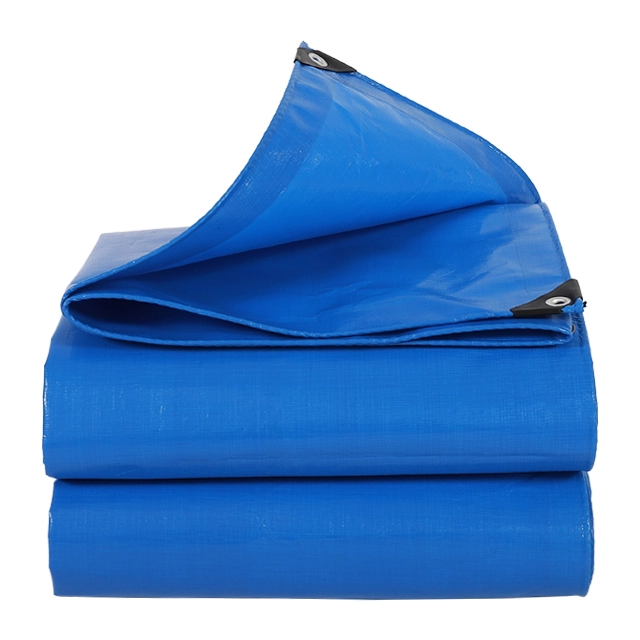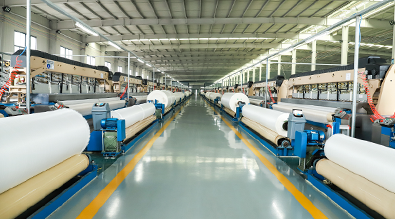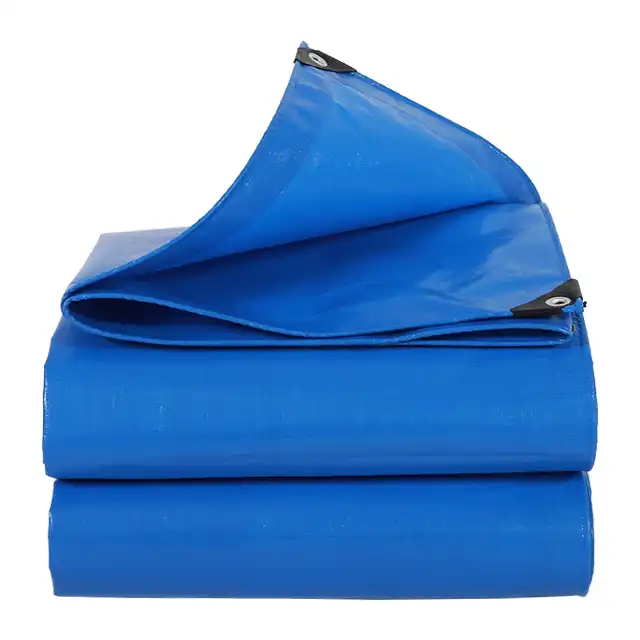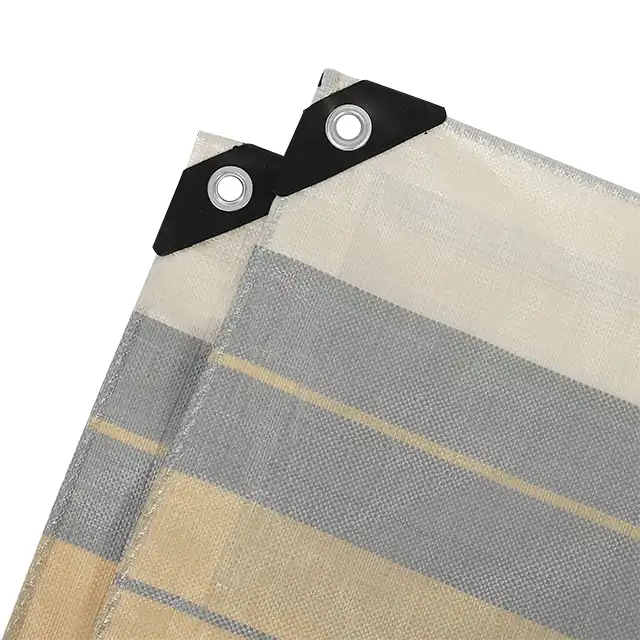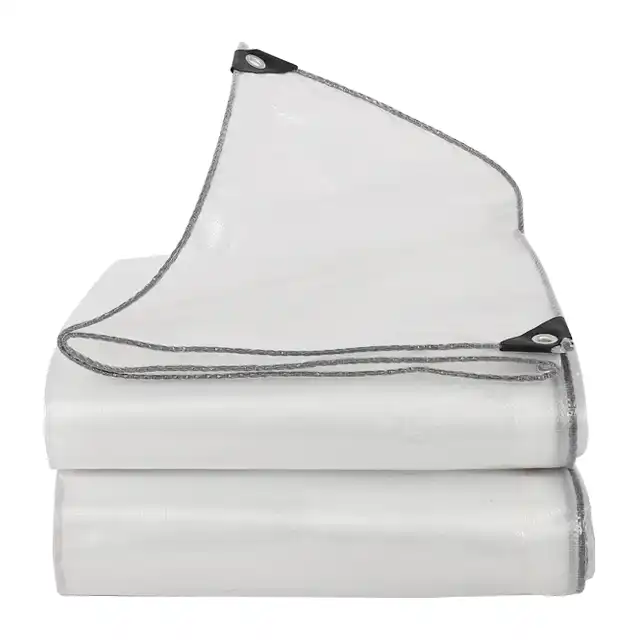How Tarpaulin Waste Affects the Environment and What to Do?
The growing concern over environmental sustainability has brought attention to various industrial waste streams, with tarpaulin waste emerging as a significant contributor to global pollution challenges. As polyethylene (PE) tarpaulins become increasingly prevalent across industries—from construction and agriculture to transportation and emergency relief—the accumulation of discarded tarpaulin materials poses serious environmental threats. Understanding how tarpaulin waste affects our ecosystem and implementing effective solutions requires a comprehensive approach that addresses both immediate disposal challenges and long-term sustainability strategies. Tarpaulin waste represents a complex environmental issue that extends beyond simple plastic pollution. These durable materials, designed for longevity and weather resistance, create persistent waste streams that can remain in the environment for decades. The challenge lies not only in their disposal but also in developing sustainable alternatives and recycling methods that can effectively manage the lifecycle of these essential industrial materials while minimizing their ecological footprint.
Environmental Impact Assessment of Tarpaulin Waste
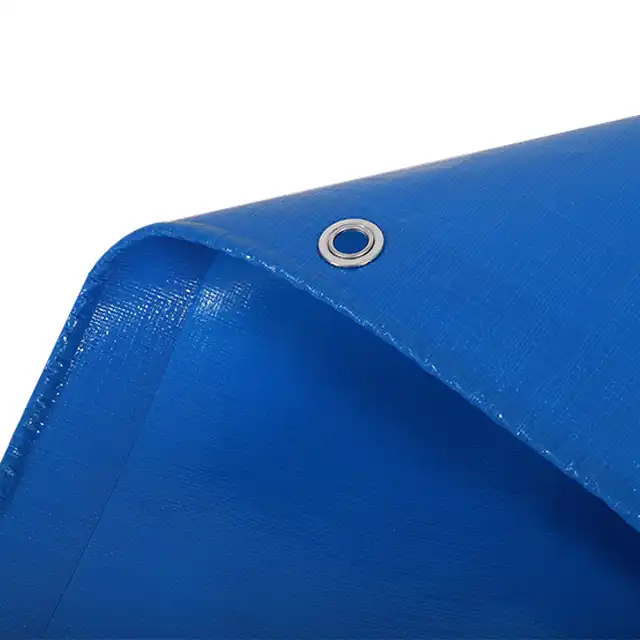
Soil and Water Contamination from Degraded Tarpaulin Materials
The environmental consequences of tarpaulin waste begin with soil and water contamination, as discarded PE tarpaulins undergo gradual degradation processes that release harmful substances into surrounding ecosystems. When tarpaulin waste accumulates in landfills or is improperly disposed of in natural environments, the polyethylene materials begin breaking down through photodegradation and oxidation processes, releasing microplastics and chemical additives into the soil matrix. These microscopic particles can persist in soil systems for extended periods, affecting soil structure, nutrient cycling, and microbial communities essential for healthy ecosystem functioning. Water contamination occurs through multiple pathways when tarpaulin waste enters aquatic systems. Surface runoff from areas containing degraded tarpaulin materials carries plastic particles and chemical leachates into rivers, lakes, and groundwater systems. The widespread use of tarpaulins in agricultural applications, such as greenhouse coverings and crop protection, creates additional contamination risks when these materials are not properly managed at the end of their useful life. Studies have shown that microplastics from degraded tarpaulins can accumulate in aquatic food chains, potentially affecting both marine life and human health through bioaccumulation processes. The chemical composition of PE tarpaulins includes various additives such as UV stabilizers, antioxidants, and colorants that can leach into surrounding environments during the degradation process. These chemical compounds can alter soil pH levels, affect plant growth, and potentially contaminate groundwater sources used for drinking water supplies. The long-term persistence of tarpaulin waste in environmental systems means that contamination effects can continue for decades, making prevention and proper disposal critical for environmental protection.
Wildlife Disruption and Habitat Degradation
Tarpaulin waste poses significant threats to wildlife through both physical entanglement hazards and habitat disruption. Large pieces of discarded tarpaulin materials can trap birds, small mammals, and marine animals, leading to injury or death. The flexible nature of PE tarpaulins makes them particularly dangerous as wildlife can become entangled in torn or degraded sections, restricting movement and access to food sources. Marine environments are especially vulnerable, as floating tarpaulin waste can be mistaken for food by sea turtles, dolphins, and seabirds, leading to ingestion injuries and potential fatalities. Habitat degradation occurs when tarpaulin waste accumulates in natural environments, creating physical barriers that disrupt normal ecosystem functions. In terrestrial environments, large pieces of tarpaulin waste can smother vegetation, preventing photosynthesis and disrupting plant communities. This vegetation loss can cascade through food webs, affecting herbivorous species and subsequently impacting predator populations. Aquatic habitats suffer similar disruptions when tarpaulin waste settles on lake beds or river bottoms, covering benthic communities and disrupting sediment processes essential for aquatic ecosystem health. The widespread use of tarpaulins in various industries, from construction sites to agricultural operations, increases the likelihood of improper disposal and environmental release. Construction activities often generate significant tarpaulin waste through damaged or obsolete covering materials, while agricultural applications produce waste through worn greenhouse coverings and field protection materials. Quality manufacturers like Linyi Shengde Plastic Co., Ltd., established in 2003 with over 20 years of experience in PE tarpaulin production, recognize the importance of developing durable products that minimize waste generation through extended service life and improved material performance.
Atmospheric Pollution Through Incineration and Degradation
The atmospheric impact of tarpaulin waste represents a significant environmental concern, particularly when these materials are disposed of through incineration or undergo natural degradation processes that release harmful compounds into the air. When tarpaulin waste is burned, either intentionally in waste management facilities or accidentally in wildfires and uncontrolled burning, the combustion process releases various toxic compounds including dioxins, furans, and volatile organic compounds (VOCs). These airborne pollutants contribute to air quality degradation and can pose serious health risks to surrounding communities. Photodegradation of exposed tarpaulin waste also contributes to atmospheric pollution through the gradual breakdown of polymer chains under ultraviolet radiation. This process releases volatile compounds and creates microscopic plastic particles that can become airborne and travel significant distances from their origin points. The durability features of high-quality tarpaulins, including UV treatment and weather resistance, are designed to slow this degradation process, but improper disposal still leads to eventual atmospheric contamination as these materials break down over time. Industrial manufacturing processes must also consider atmospheric impacts throughout the tarpaulin lifecycle. Companies with advanced production capabilities, such as those operating over 200 water-jet looms and multiple coating machines like Linyi Shengde Plastic Co., Ltd., can implement cleaner production technologies that minimize atmospheric emissions during manufacturing while producing more durable products that reduce waste generation. The company's ISO 9001:2015 certification demonstrates commitment to quality management systems that consider environmental impacts throughout the production process.
Innovative Recycling and Waste Management Solutions
Advanced Mechanical and Chemical Recycling Technologies
The development of sophisticated recycling technologies represents a crucial advancement in managing tarpaulin waste effectively while recovering valuable materials for reuse in manufacturing processes. Mechanical recycling approaches focus on physically processing used tarpaulin materials through shredding, washing, and melting procedures that convert waste tarpaulins into raw material pellets suitable for new product manufacturing. These technologies have evolved significantly to handle the complex multi-layer structures common in high-quality tarpaulins, including the LDPE laminated surfaces and reinforcement materials that provide durability and weather resistance. Advanced sorting technologies utilizing near-infrared spectroscopy and density separation methods can effectively separate different types of plastic materials found in composite tarpaulin waste, enabling more efficient recycling processes. The challenge of processing tarpaulin waste lies in its varied composition, as different manufacturers use different material combinations and treatments. High-quality producers like Linyi Shengde Plastic Co., Ltd., with their comprehensive production capabilities including yarn extrusion from 400D to 2500D thickness and fabric weaving from 1.5m to 5m widths, create products with consistent material properties that facilitate more effective recycling processes. Chemical recycling technologies offer promising solutions for tarpaulin waste that cannot be effectively processed through mechanical methods. These processes use chemical reactions to break down polymer chains into their constituent monomers, which can then be purified and repolymerized into new plastic materials. This approach is particularly valuable for handling contaminated or degraded tarpaulin waste that would be unsuitable for mechanical recycling. The development of solvolysis and pyrolysis technologies specifically designed for polyethylene materials shows significant potential for creating closed-loop recycling systems for tarpaulin waste.
Circular Economy Implementation in Tarpaulin Manufacturing
The transition toward circular economy principles in tarpaulin manufacturing requires comprehensive changes in design, production, and end-of-life management strategies that minimize waste generation while maximizing material value retention. This approach begins with design for recyclability, where manufacturers consider the entire product lifecycle during development phases, selecting materials and construction methods that facilitate eventual recycling or biodegradation. The integration of recycled content into new tarpaulin production creates demand for recycled materials while reducing reliance on virgin plastic resources. Extended producer responsibility programs can incentivize manufacturers to develop more sustainable products while taking responsibility for end-of-life management of their tarpaulins. Companies with strong research and development capabilities, such as those with high-level R&D teams developing ultra-wide width braiding machines and advanced product features like fire prevention and enhanced waterproofing, are well-positioned to innovate sustainable solutions. The development of take-back programs where manufacturers collect used tarpaulins from customers for proper recycling or disposal demonstrates commitment to circular economy principles. Collaboration across supply chains enables more effective implementation of circular economy strategies in tarpaulin waste management. Partnerships between manufacturers, distributors, end users, and recycling facilities can create efficient collection and processing systems that capture tarpaulin waste before it enters general waste streams. The extensive export network of established manufacturers, reaching over 30 countries including major markets in North America, South America, Europe, Asia, and Africa, provides opportunities for implementing international circular economy initiatives that address tarpaulin waste on a global scale.
Biodegradable Alternatives and Material Innovation
The development of biodegradable alternatives to traditional PE tarpaulins represents a fundamental shift toward sustainable material solutions that eliminate long-term environmental persistence of tarpaulin waste. Research into bio-based polymers derived from renewable resources such as corn starch, sugarcane, and other agricultural waste products has produced materials with similar protective properties to conventional tarpaulins while offering controlled biodegradation in appropriate environmental conditions. These innovations require careful consideration of performance requirements, as tarpaulins must maintain structural integrity under various weather conditions while providing reliable protection for goods and equipment. Material innovation extends beyond simple substitution to include hybrid approaches that combine biodegradable components with recyclable synthetic materials in optimized configurations. Multi-layer tarpaulin designs can incorporate biodegradable outer layers that provide initial protection while maintaining recyclable core materials for structural support. This approach allows for gradual environmental breakdown of exposed components while preserving valuable materials for recovery and reuse. Advanced coating technologies can apply biodegradable protective layers to conventional tarpaulin substrates, extending service life while enabling eventual environmental breakdown. The challenge of developing biodegradable tarpaulin alternatives lies in matching the performance characteristics of conventional PE materials while maintaining cost-effectiveness for widespread adoption. Applications ranging from truck canopies and ship covers to agricultural greenhouse coverings require specific performance criteria including waterproofing, UV resistance, tear strength, and temperature tolerance. Companies with comprehensive production capabilities and quality control systems, including advanced testing equipment and ISO certification, are essential for validating the performance of new biodegradable materials under real-world conditions.
Industry Best Practices and Corporate Responsibility
Sustainable Production Methods and Quality Control
The implementation of sustainable production methods in tarpaulin manufacturing requires comprehensive integration of environmental considerations throughout all stages of the production process, from raw material sourcing through finished product delivery. Advanced manufacturing facilities with extensive production capabilities, including multiple wire drawing lines, hundreds of water-jet looms, and sophisticated coating machines, must optimize their operations to minimize energy consumption, reduce waste generation, and eliminate harmful emissions. This optimization involves implementing energy-efficient equipment, utilizing renewable energy sources where possible, and developing closed-loop systems that recycle production waste back into manufacturing processes. Quality control systems play a crucial role in reducing tarpaulin waste by ensuring that products meet stringent performance standards that maximize service life and minimize premature failure. Companies with comprehensive quality monitoring systems throughout the production process, supported by advanced testing equipment and third-party laboratory verification, can consistently produce tarpaulins that withstand harsh environmental conditions without degradation. The ISO 9001:2015 certification demonstrates commitment to systematic quality management that considers environmental impacts while ensuring product reliability and customer satisfaction. Sustainable raw material sourcing involves working with suppliers who demonstrate environmental responsibility in their operations while providing high-quality polyethylene and additives that enable production of durable, long-lasting tarpaulins. The selection of UV stabilizers, antioxidants, and other chemical additives must consider both performance requirements and environmental impact, choosing compounds that provide necessary protection while minimizing ecological harm during production and disposal. Advanced yarn extrusion capabilities, from 400D to 2500D thickness, enable optimization of material usage while maintaining structural integrity and weather resistance.
Supply Chain Transparency and Environmental Accountability
Supply chain transparency has become essential for addressing tarpaulin waste through comprehensive tracking of materials, production processes, and end-of-life management across all stakeholders in the tarpaulin industry. This transparency enables identification of waste generation points, optimization of resource utilization, and implementation of effective waste reduction strategies throughout the supply chain. Companies with extensive international distribution networks, serving over 30 countries across multiple continents, must develop systems for monitoring environmental impacts across diverse markets while ensuring consistent application of sustainability standards. Environmental accountability extends beyond individual company operations to encompass collaborative efforts with customers, suppliers, and regulatory agencies in developing comprehensive solutions for tarpaulin waste management. This collaboration includes providing customers with guidance on proper use, maintenance, and disposal of tarpaulin products while supporting development of collection and recycling infrastructure in served markets. Partnerships with international organizations such as UNHCR, IOM, ICRC, and UNICEF demonstrate commitment to responsible production and distribution practices that consider long-term environmental and social impacts. The development of environmental management systems that integrate with existing quality management frameworks enables comprehensive monitoring and continuous improvement of environmental performance across all business operations. These systems must address tarpaulin waste through lifecycle assessment methodologies that evaluate environmental impacts from raw material extraction through end-of-life disposal or recycling. Regular auditing and reporting of environmental performance data provides transparency for stakeholders while identifying opportunities for further waste reduction and sustainability improvements.
Customer Education and Proper Usage Guidelines
Effective customer education programs play a vital role in reducing tarpaulin waste by promoting proper usage, maintenance, and disposal practices that maximize product lifespan while minimizing environmental impact. These educational initiatives must address the diverse applications of tarpaulins, from truck covers and cargo protection to agricultural uses and emergency shelter applications, providing specific guidance for each use case. Comprehensive product documentation should include information about proper installation techniques, maintenance requirements, and signs of wear that indicate need for replacement or repair. Proper usage guidelines must consider the specific performance characteristics of different tarpaulin products, including waterproofing, UV resistance, tear strength, and temperature tolerance, to ensure that customers select appropriate products for their applications and use them within design parameters. Products with features such as 100% waterproofing, tear resistance, and UV treatment require specific handling and storage procedures to maintain these performance characteristics throughout their service life. Educational materials should explain how proper use can extend product life while improper use can lead to premature failure and unnecessary waste generation. Maintenance and repair guidance can significantly reduce tarpaulin waste by enabling customers to address minor damage before it leads to complete product failure. Simple repair techniques using appropriate patching materials and sealing methods can restore functionality to damaged tarpaulins, extending their useful life and delaying replacement requirements. Training programs for high-volume users, such as transportation companies and agricultural operations, can provide hands-on instruction in maintenance techniques while promoting best practices for storage and handling that prevent damage and extend product life.
Conclusion
The environmental challenges posed by tarpaulin waste demand immediate and comprehensive action from manufacturers, users, and policymakers alike. Through innovative recycling technologies, sustainable production methods, and responsible disposal practices, the industry can significantly reduce the ecological footprint of these essential materials. The implementation of circular economy principles, development of biodegradable alternatives, and enhanced customer education programs represent crucial steps toward sustainable tarpaulin waste management. Success in addressing these challenges requires collaboration across the entire supply chain, from raw material suppliers to end users, working together to minimize waste generation while maximizing resource efficiency.
As a leading enterprise in the PE tarpaulin field, Linyi Shengde Plastic Co., Ltd. remains committed to environmental responsibility through continuous innovation and quality improvement. With over 20 years of experience, state-of-the-art production facilities, and ISO 9001:2015 certification, we understand the importance of developing sustainable solutions that meet customer needs while protecting our environment. Our advanced R&D capabilities enable us to create durable, high-performance products that minimize waste through extended service life, while our comprehensive quality management systems ensure consistent production of reliable tarpaulins that serve customers across more than 30 countries worldwide.
We invite you to join us in promoting sustainable tarpaulin practices and reducing environmental impact through responsible product selection, proper usage, and effective waste management. Together, we can create a more sustainable future for the tarpaulin industry while continuing to provide the essential protection and covering solutions that modern society requires. Contact us today at info@shengdetarp.com to learn more about our sustainable products and environmental initiatives.
References
1. Thompson, R.C., Moore, C.J., Saal, F.S., & Swan, S.H. (2009). Plastics, the Environment and Human Health: Current Consensus and Future Trends. Environmental Science & Technology, 43(16), 6117-6122.
2. Geyer, R., Jambeck, J.R., & Law, K.L. (2017). Production, Use, and Fate of All Plastics Ever Made. Science Advances, 3(7), e1700782.
3. Barnes, D.K., Galgani, F., Thompson, R.C., & Barlaz, M. (2009). Accumulation and Fragmentation of Plastic Debris in Global Environments. Philosophical Transactions of the Royal Society B, 364(1526), 1985-1998.
4. Ellen MacArthur Foundation. (2016). The New Plastics Economy: Rethinking the Future of Plastics. Environmental Protection Agency Reports on Circular Economy Implementation.
